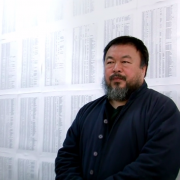Small (May Be) The New Big
When the highly appealing “Always #Likeagirl” campaign was awarded the PR Grand Prix at the Cannes Lions International Festival of Creativity this past June, it appeared to bode well for PR’s emergence as a true creative force with a well-earned seat at the integrated marketing communications table.
However Ad Age wasn’t so sure. “Role of Dedicated Shops in Integrated Campaigns Remains Under Debate,” the headline ran, with the story going on to argue that “public relations agencies’ role in the winning work remains murky.”
Whether or not you agree, the suggestion that PR agencies don’t carry the creative torch quite as brightly as their advertising colleagues – even when they win the Grand Prix! — has got to hurt…at least a little.
And it’s why it’s worth asking, as PR Week recently did, “What is the new PR agency?” What is the best way to build on PR’s “unique mentality and heritage” and yet foster and unleash an often-elusive but magical (you know it when you see it) blend of creativity and engagement that, when achieved to the max, will sparkle and shine its way across today’s multi-media landscape.
In this most exciting of times for communications, agencies both large and small are challenging themselves to work with greater integration and convergence across disciplines (advertising, marketing, PR, digital, etc.), with the goal of helping clients more completely and holistically tell their stories and more deeply engage with communities in today’s complex digital and social media-driven marketplace.
One obvious approach is to re-structure to better reflect the collaboration across disciplines demanded in today’s communications environment, as many are already doing.
The larger PR communications networks would seem to have an advantage in this regard. They already contain within themselves (or can acquire) the ad agencies, digital shops and other resources to, in theory, bring an integrated communications team to the table for any client.
But fostering greater integration among previously distinct (and proud of it!) agencies isn’t easy. Pesky questions about ownership can persist. Once in the same room, those from different disciplines may find they speak different languages and look at the world (and a given client challenge) in fundamentally different ways. Plus, organizational change entails risk, especially for larger organizations that may have more at stake. Nevertheless, this is a key challenge preoccupying those at the helm of the PR world’s most preeminent companies today.
Another approach has been to re-think the traditional hierarchical, “generalist PR” agency model in favor of models that elevate insight (read, creativity) on an equal plane with implementation. We did this when founding the Chandler Chicco Agency 20 years ago, with a “no titles/no walls” philosophy aimed at eliminating artificial barriers to collaboration and creativity. In 2011, GolinHarris did away with the traditional agency practice area/account management structure that many PR agencies share, and organized its people into four communities – the G4 model – based on an analysis of key competencies judged critical to success: insight strategies, idea creators, engagement connectors, and integration analysts. This type of re-imagining of how agencies can work is well worth watching as a harbinger of things to come.
Looking ahead, a compelling “alternative agency reality” could very well be one that is gaining traction as talent migrates out of establishment agencies to embrace new creative challenges and new paths to achieving them. Clients, too — especially CMO’s and others who see the increasing interdependence of the various disciplines that make up “marketing communications” – are seeking partners who can live “close to the heart” with them and partner intimately to help realize their vision of a truly integrated creative marketing communications strategy for their brand.
Maybe “small is the new big.”
The Holmes Report explored this notion when they identified the “continued rise of the micro-network” as a #1 Global PR Trend To Watch in 2015. By that they meant there’s a growing market for more agility in meeting client needs and more immediate access to senior-level counsel and specific sector and practice expertise – and that this demand can potentially more readily be met by micro-networks, partnerships, and other entrepreneurial arrangements. Trend #2 was toward “making friends rather than purchases” – an acknowledgement that while mergers and acquisitions are likely be to part of the PR corporate landscape for some time to come, these come with their limitations (organizational, cultural and otherwise) and there is increasing opportunity for specialist, entrepreneurial firms to work in tandem toward meeting clients’ increasingly ambitious goals for “surround-sound” relevance.







